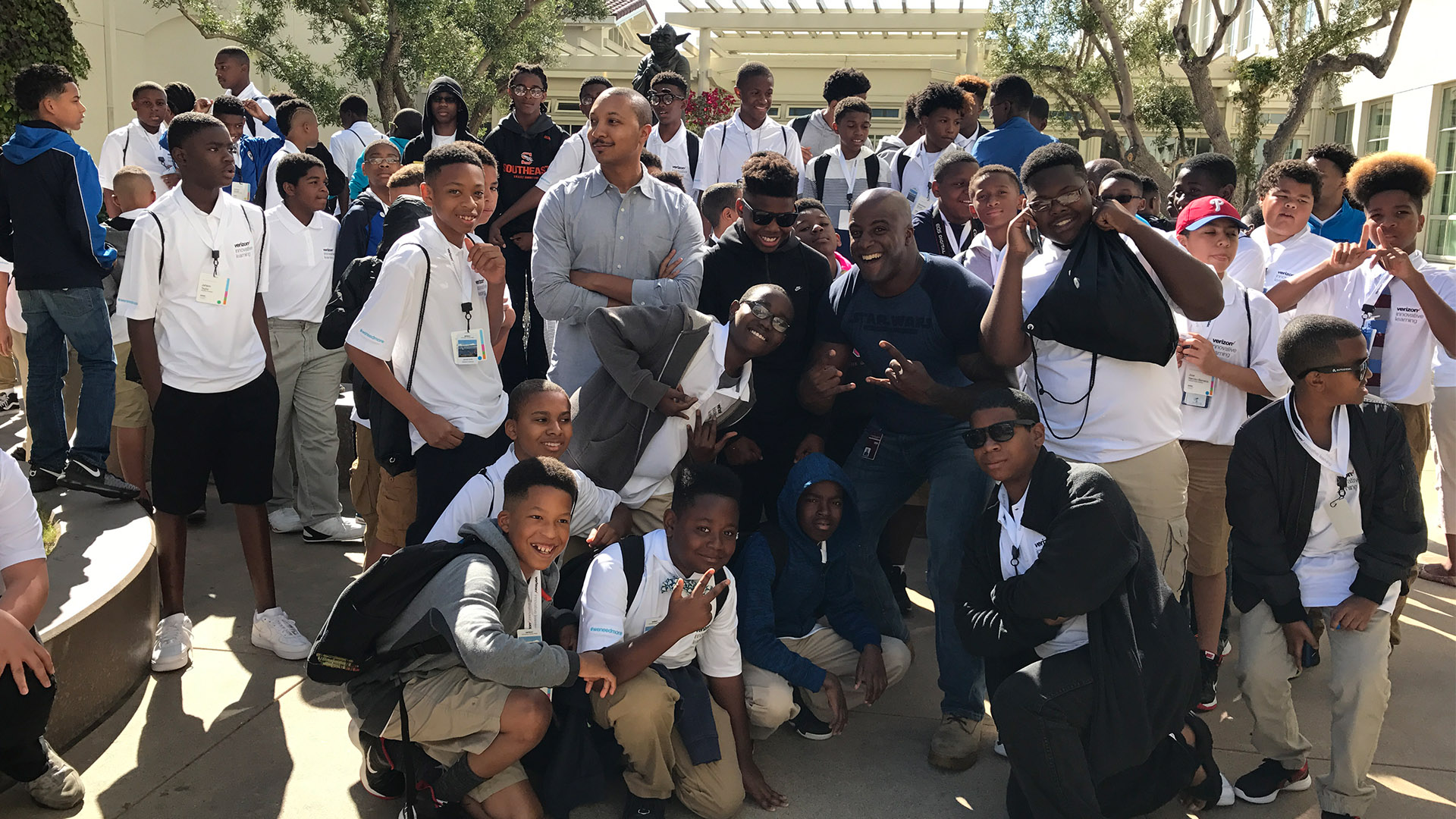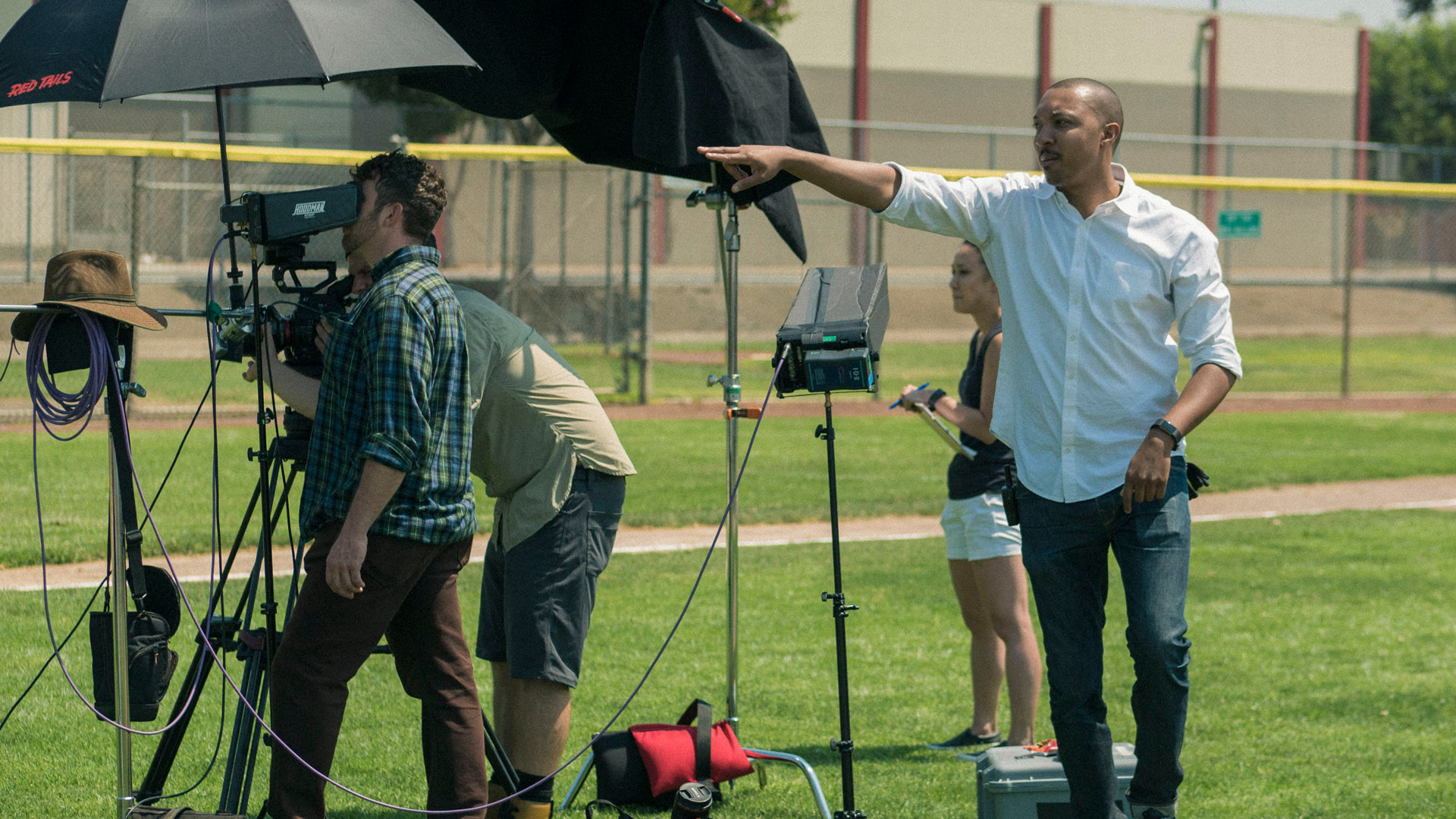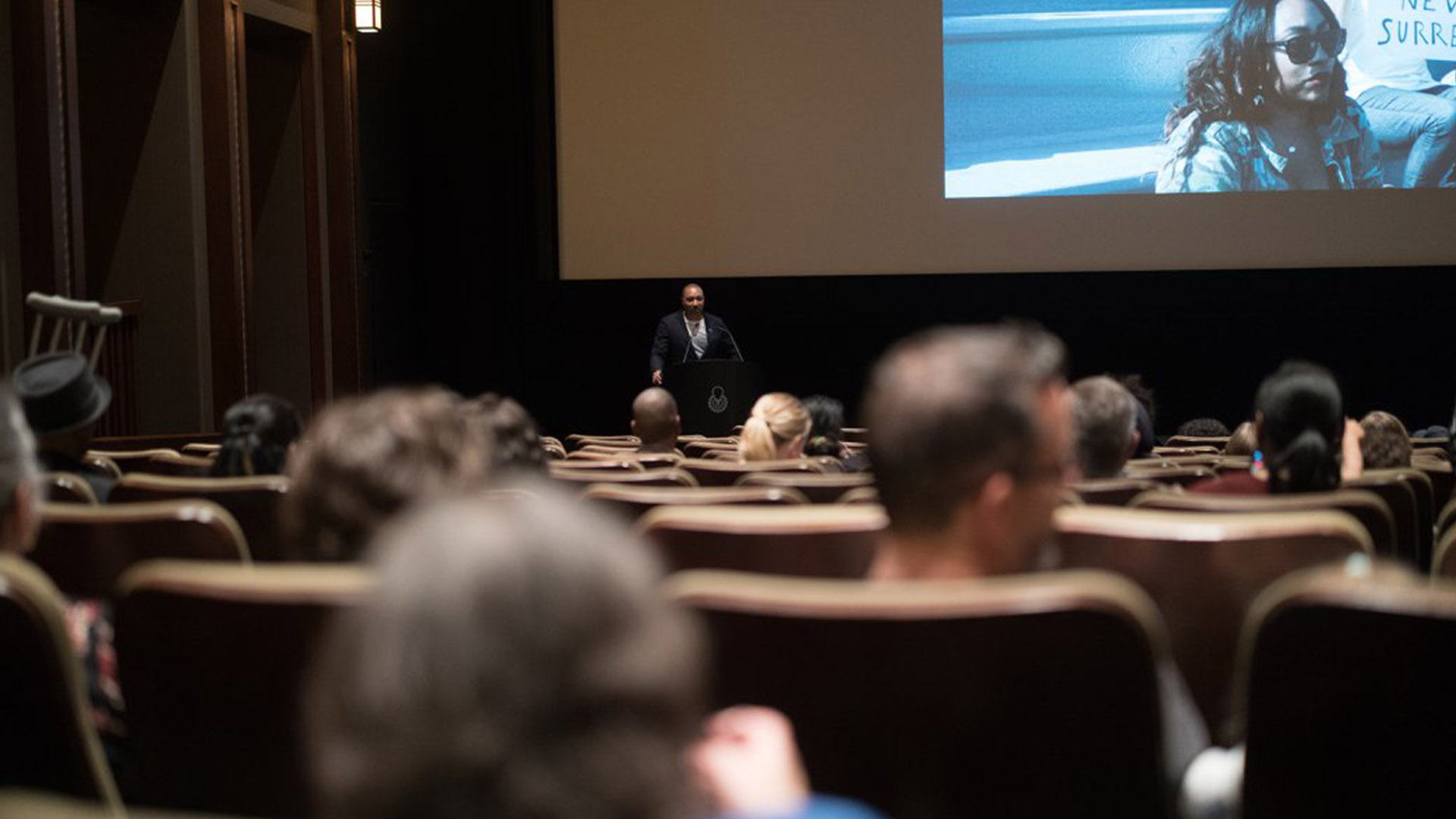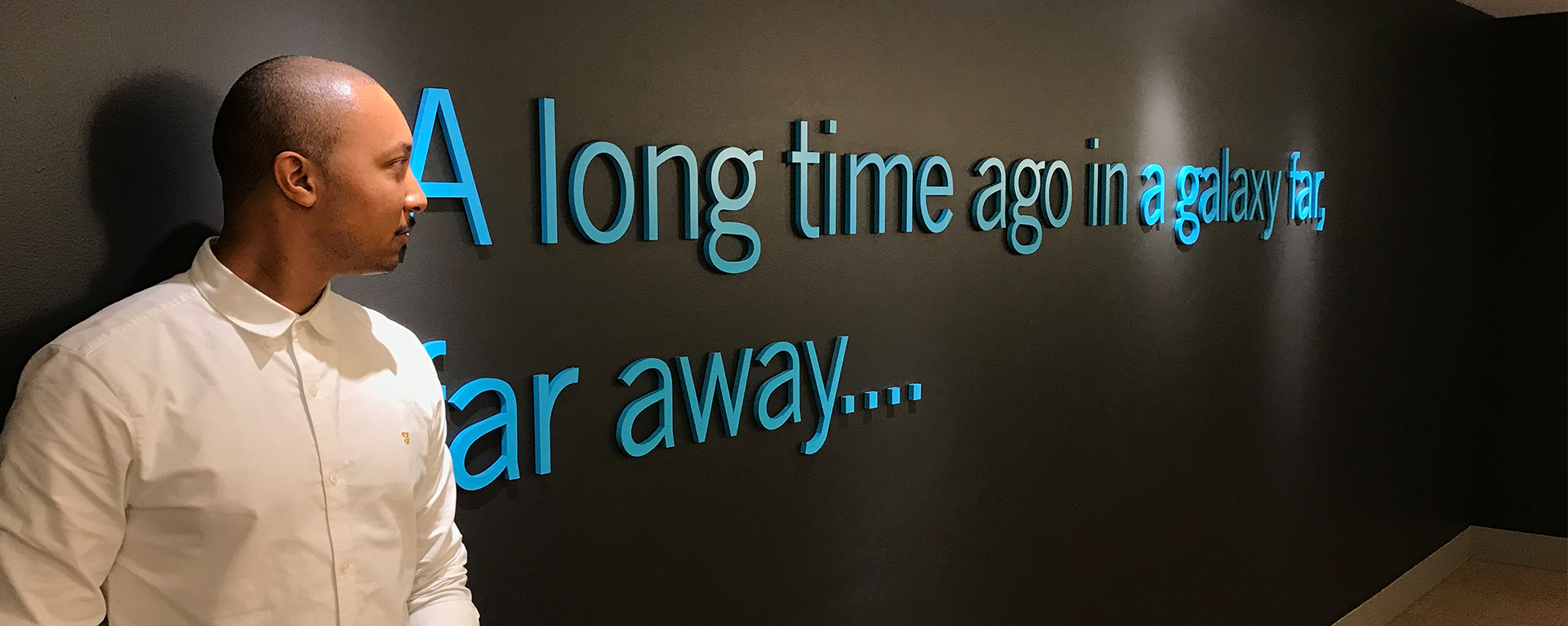Employee Spotlight: LeAndre Thomas
The Video Manager & Archivist is a Lifelong Filmmaker With a Passion for Lucasfilm
Can you tell us your role and describe your day-to-day responsibilities?
I am the project manager for video & digital assets. The essence of what I do is manage the entire Lucasfilm video archive. I make sure it’s stored and backed-up safely, as well as accessible to the company (in particular our video production team) and to our partners working with Lucasfilm around the world.
And in what role did you first join the company?
I started here in 2011 as a production assistant with Lucas Video Production. At first I was on the swing-shift rather than the traditional nine to five. I would come in later in the evening and work through the night. My tasks were to help out with shoots, capture tapes and load them into our editing system, and do assistant editorial work.
How did your background prepare you for that role?
Ever since I was young, I’d always wanted to work for Lucasfilm. I’ve been a huge Star Wars fan as far as I can remember, and even wrote my own Episode VII story in a little green notebook when I was a kid! (Later in life I actually got to work on The Force Awakens, which was a dream come true.)
I’ve also always wanted to be a filmmaker, and was lucky enough to feel that way from pretty early on in life. I pursued that passion until college. I had gravitated towards editorial and post-production work, and was actually hired when I was still in school at the Academy of Art University in San Francisco. There was a period when I was finishing school and working at Lucasfilm at the same time!
So Lucasfilm was your first professional experience in the film industry?
I actually went straight to Los Angeles right after I graduated high school. It’s sort of accepted that, if you want to make movies, you should go down there and try to break in. So I enrolled in a private school and studied photography and filmmaking. I made some friends, but I also learned how difficult it can be to break into the industry. I ended up coming back to the Bay Area to study filmmaking. One of the short films I made in school had played at some festivals, and based on that film a professor at the Academy of Art graciously connected me for an interview at Lucasfilm.
What about filmmaking was attractive to you when you were growing up?
I was always obsessed with art in general. So I began drawing a lot, and made my own comic books, and other students in school would make them with me. As I pursued and experimented with different forms of art, there was this connection between photography and comic books. It was about making a picture inside a frame and using that to tell a story. So my evolution went from comics to photography to motion pictures. That led me down a path to editing, and of course making comics and editing are very similar. You’re picking and choosing what is seen and said next. That’s how my brain approached it.
Your story is a little reminiscent of George Lucas’!
George Lucas was definitely an inspiration not just because he made Star Wars but because he came from the Bay Area and northern California. I grew up in the East Bay in Oakland and Hayward, which isn’t exactly the same as Modesto where George is from, but the fact that there was this iconic filmmaker from the same region was so influential. It gave me the confidence that I could do it. You don’t have to be in Hollywood or from Los Angeles. You can be from here and still be as big as you want to be.
So how did it feel to join the company in 2011? What sort of projects were in progress?
The Star Wars saga was being released on Blu-ray for the first time in a box set. That was a major project for the company. Things were also ramping up on Red Tails. There was a lot going on, and I just sort of jumped into the middle of it. There wasn’t much time to be star struck! But it was amazing to walk down the hallways and see legends like John Knoll or Dennis Muren. Inside I was freaking out but I tried to keep my composure!
In time I realized that everyone was very relaxed and kind, and just like any other person. A big moment early on was when I first got to work with George Lucas. As a production assistant, I was called on to help shoot an interview with him. It was surreal! To be at Skywalker Ranch, inside the research library, and I’m helping him set up his microphone. It was mind-blowing! He was very approachable, soft-spoken, and nice. It was very casual and comfortable.
Can you tell us a little about the role that the video production and archiving team plays within Lucasfilm?
Lucas Video Production, which we call LVP, basically has dual responsibilities. We create new content for all our franchises: documentaries, featurettes, trailers, and television spots. We also archive everything that the company produces: movies, shows, everything Lucasfilm puts out. One thing that’s special about LVP is that we get to shed light on how things are made here (kind of like this spotlight interview!). We’re known for our behind-the-scenes documentaries. We have the camera crews, the producers, and the editors that make that happen. It’s important to show the world the hard work that happens behind the camera.
How did you grow into your current role?
I sort of grew with our department. As we scaled up, I worked to help set up the department with new capabilities. We had been asked to help with delivering archived footage to people making requests from around the company. I helped create the system where people can request things efficiently and it’s now available to all of Disney. I’ve also brought my knowledge and experience with different types of digital footage to the role. Our team is always having to think ahead to keep up with the rapidly evolving technology.
You’ve mentioned working on the recent Star Wars productions. What is your team’s role on a film like that?
Not only do we take in the actual film, but there’s also all the behind-the-scenes material as well. It can be twice as much material as what was shot for the film itself. Between Liz Stanley, our film archivist at Skywalker Ranch, and everyone on the LVP team, we make sure everything is available. Then when the movie is completed and mastered, it comes to me and I work with the film’s production team to make sure the final cut of the film is properly archived and accessible. It’s sort of like having the keys to the holy grail copy of the film! It’s pretty cool, knowing how much these movies mean to people.
Are there any productions you’ve been involved in that are a particular favorite?
Red Tails was very special. I actually got to meet a Tuskegee Airman when he visited my school in sixth grade. So I knew about their story growing up, and being African-American, they’re the rock stars of our history. To get to work on Red Tails, which George Lucas had wanted to make for a long time, was amazing. It was one of the first things I worked on here.
Also, the behind-the-scenes documentaries that we’ve made for the new Star Wars films have been a great experience. It’s a thrill to connect our archival footage from the classic Star Wars movies to the newest films.
You’ve also been involved in archiving efforts with pre-existing materials, correct?
In some ways I feel like Jocasta Nu, the Jedi librarian from Attack of the Clones! Lucasfilm has a massive archive of footage. If you totaled all of our video content, it runs over one million minutes. It’s a challenge sometime because we have to work with all kinds of formats going back to the company’s founding. So we’ve been working on a new digitization project to make sure that all of the earlier types of footage are preserved and more easily accessible. That required a team to capture tapes, including working with our archivists at Skywalker Ranch. Dozens and dozens of tapes would come every week and be captured around the clock. We had an amazing, passionate team that made it happen.
In that process we unearth all sorts of remarkable material. It’s a real testament to George Lucas. From the beginning, he wanted to document how the films were made so that knowledge could be shared. He’s been a believer in behind-the-scenes documentaries. To have that timeline of our history at your fingertips is a real privilege.
Do you still actively make films outside of work? If so, what has that experience been like?
I continue to make films today, and being at Lucasfilm is such a great benefit because you work in the same building with other creative people who make films or are involved in the process. The network of talent is right there, and I’ve been really lucky to build friendships and collaborate with people here. We’ve worked on each other’s films. Just last year I won “Best Director” at the Pasadena International Film Festival for my short Mirror and that would not have happened without the help of my Lucasfilm colleagues.
When you work with your colleagues outside of work, you see them getting to apply themselves in ways that they don’t necessarily get to do in their normal job. A lot of us have been able to work on each other’s films. It brings us closer and makes the company culture that much better. We make stuff here. It starts from the top down. Our President Kathleen Kennedy is a producer. That trickles down to the rest of us. It’s important to keep doing what you want to do as well as what you do for the company.
Are there any other stand-out moments for you during your time working here?
In 2017, I was asked to do a presentation to a group of STEM-focused, minority middle school boys. There were about 100 students who came to our San Francisco campus, and they all wanted to take pictures with us. It was truly one of my favorite days being employed here. Then again this year, I did a similar presentation at the Black College Expo on behalf of Lucasfilm. Both experiences were very surreal because I remember going to these types of events when I was a kid, so to be on the other side of the fence truly made me feel like I had come full circle. I also think that sharing my experiences with them in person could provide a sort of tangible proof that their dreams aren’t just something seen on TV, or in the movies, but actually possible.
Beyond just what you’ve worked on yourself, do you have a favorite Lucasfilm production?
I’m a huge fan of Indiana Jones and the Temple of Doom. I used to watch it on video tape with my grandma when I was growing up. That might not be the most traditional “grandson and grandma” movie, but it was for me, and it really molded me as a person. There’s so much in Temple of Doom that is different. It starts with a musical number, which is something Lucasfilm doesn’t often do. I love that it’s really a mash-up of the sensibilities of George Lucas and Steven Spielberg. It has horror, romance, adventure, music, cuteness, and slapstick comedy. Even for Lucasfilm, it’s unusual.
Do you have any advice for people who aspire to work here?
Practicing your craft is the best way to give yourself any opportunity, let alone one at Lucasfilm. The more you improve your skills, the more it increases your chances. I emphasize that because I’ve been making movies since I was a kid. When I got to college that helped me. It’s come to feel natural, but it’s always derived from practice. My filmmaking helped me get attention from people at Lucasfilm.
You can watch LeAndre’s award winning-film Mirror by clicking here.



Lucas O. Seastrom is a writer and historian at Lucasfilm.

